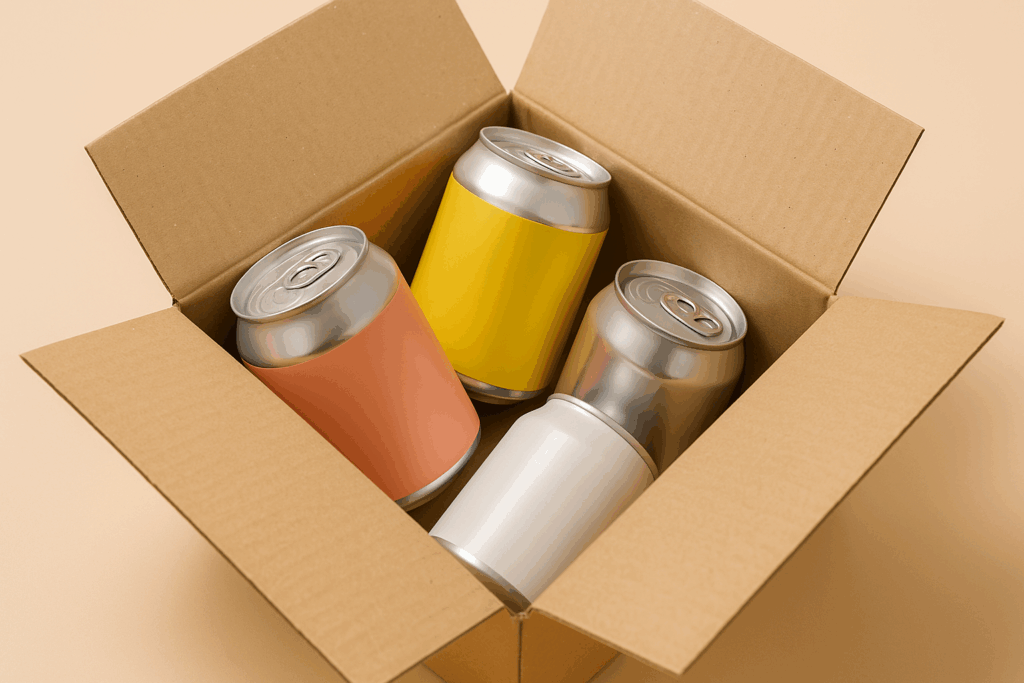Food brands compete for attention online and packaging plays a bigger role than just protecting the product. For many food brands, that first look can make or break a sale. Innovation of packaging isn’t just about being eco-friendly but it’s about creating a strong visual story.
This blog explores nine noteworthy food packaging innovations that NYC brands are implementing to boost shareability, build customer loyalty and differentiate themselves in a crowded food industry.
1. Edible Packaging
Imagine a seaweed-based spoon that dissolves after your smoothie or a rice paper wrap that doubles as a snack. Edible packaging isn’t a futuristic gimmick by food brands but it’s a rising trend among NYC brands responding to consumer demand for zero-waste solutions with flair.
Brands like Loliware, which pioneered seaweed-based straws and cups, prove that edible packaging isn’t just biodegradable but also brandable.
If you’re target consumers are Gen Z or Millennials, edible packaging tells a compelling brand story that aligns with values, sustainability and experience. For more insights on how to connect with younger consumers through meaningful experiences, check out this guide on marketing to Millennials in the digital age.
Implementation Tip: Start with a single product line or limited-time campaign and test performance through user-generated content, delivery reviews and QR-coded feedback loops.
2. Biodegradable Packaging
Unlike edible packaging, biodegradable packaging is crucial to your online presence even if it disappears after usage. This is because modern consumers base their decisions not just on visual perception but also on their ideas.
Food brands are switching to plant-based plastics (PLA), compostable films and bagasse containers to cut their carbon footprint without sacrificing design. Meal delivery services, salad chains and juice bars are especially invested in this transition, not just for the environmental advantage but for how it strengthens brand positioning.
For example, using biodegradable trays with minimalist labels and eco-certification logos allows brands to communicate care for the planet and their customer. This message translates powerfully in digital product pages and Instagram flat lays.
Strategic Tip: Sustainability is only as effective as the story you tell around it. Include biodegradable messaging in your packaging and digital touchpoints.
3. Reusable Containers
Reusable containers are not only helping the environment, but they are also helping NYC brands retain customers. Collapsible cup systems that connect to loyalty applications, fabric-based tote wraps, and stainless-steel containers are also being tested by other businesses.
Making the system frictionless is crucial because the easier it is to return and reuse, the more plausible it is that it will stick.
Marketing Advantage: Reusable containers don’t just sit in a landfill, but they sit in your customer’s kitchen, office, or gym bag. That’s brand visibility that keeps working long after checkout. When that packaging is beautifully designed and durable, it becomes a physical reminder of your brand values.
4. Interactive Packaging: Scan, Play and Share
As augmented reality (AR), NFC chips and QR codes gain popularity, food brands are incorporating digital elements into physical packaging to interact with customers long after they make a purchase.
Two-way partnerships are fostered by interactive packaging. It enables data collection, feedback loops, and customized content by transforming passive packaging into a real-time consumer touchpoint.
Food Packaging Innovations that include interactive elements give brands a reason to reconnect post-purchase. Especially in NYC’s competitive food scene, this is your opportunity to extend lifetime value.
“Packaging is no longer the end of the transaction. It’s the beginning of the brand story.” – Julie Rice, co-founder of SoulCycle and wellness investor
5. Transparent Packaging
In a visual-first market, transparent packaging help artisan food producers showcase ingredients in their purest form. For example, cold-pressed juice companies often display sediment layers, proving authenticity. Bakeries use peek-through boxes to flaunt golden croissants and flaky pastries. Transparency isn’t just functional but it’s a persuasive tool to gain customer trust.
Digital audiences shop with their eyes, so it does matter. Vibrantly colored or textured packaging typically performs better on social media sites like Instagram.
Strategic Tip: When pairing transparent materials with minimalist labeling, make sure to highlight the product as the hero. This is effective for brands selling premium goods like granola, pastries or fresh pasta where the visual story sells better than any tagline.
6. Compostable Packaging
While many biodegradable products only degrade under industrial conditions, certified compostable packaging (ASTM D6400, EN 13432) breaks down in household compost bins within weeks. This technical distinction is crucial to avoid greenwashing claims and ensure credibility.
What makes compostable packaging a standout food packaging innovation is its dual impact. It supports waste reduction and serves as a strong branding message when done right.
Brands can amplify the benefits of compostable packaging by printing simple composting instructions, adding QR links to compost guides or offering drop-off partnerships in NYC’s urban communities.
7. Insulated Packaging
Insulated packaging has evolved from a functional afterthought to a brand differentiator. Whether it’s a frozen meal kit from a DTC brand or hot ramen from a Japanese restaurant, insulation is critical to protecting product quality.
The problem is that the majority of conventional insulation materials, like Styrofoam, are bad for the environment and off-brand for food companies that care about the environment.
Forward-thinking NYC brands are embracing food packaging innovations that deliver temperature control and environmental credibility. Here are some options:
- Compostable thermal liners made of recycled denim or corn fibers
- Gel packs with water-based solutions (non-toxic and drain-safe)
- Flat-pack insulated mailers that reduce shipping bulk
- Reusable cooler bags tied into subscription models
Strategic Opportunity: Insulated packaging can also be used as a marketing asset. Branded sleeves or labels reminding customers to reuse or recycle build credibility and trust during the critical unboxing moment.
8. Artistic Packaging
Artistic packaging transforms everyday food items into covetable objects and food brands in NYC are turning to local artists, illustrators, and designers to do just that.
From matchbox-style macaron boxes with foil-embossed illustrations to hand-lettered kombucha labels, artistic packaging adds a layer of brand identity that can’t be mimicked.
For food startups targeting lifestyle-conscious consumers, artistic packaging can bridge the gap between product and emotion. It turns packaging into décor, making it more likely to be displayed, reused, and shared especially among design-forward consumers.
Strategic Takeaways:
- Use limited edition packaging to create FOMO and drive urgency
- Partner with NYC-based illustrators to support the local creative economy
- Design packaging to photograph beautifully in UGC scenarios—flat lays, unboxings, shelf shots
Bonus Tip: Include subtle calls-to-action like “tag us to get featured” or QR codes that link to artist bios or campaign stories.
9. Customizable Packaging
Customizable packaging isn’t just a novelty, it’s a scalable growth driver for brands aiming to build an emotional connection with customers. In NYC’s hyper-personalized market, brands that allow users to tailor their unboxing experience stand out.
Think of a coffee brand that lets you print your name on each bag or a meal kit that includes sticker sheets for kids. These small touches build affinity and shareability. Personalized packaging also drives gifting, influencer marketing and limited-run collaborations.
Customization equals attention, which makes this food packaging concept a strategic concept. Customers are more likely to stop, interact with, and share packaging that reflects them in a world where scrolling is common.
Strategic Use Cases:
- Enable personalization through e-commerce platforms (e.g., Shopify product builders)
- Create seasonal kits that offer a “build-your-own” format
- Incorporate handwritten notes or printed inserts based on user behavior
Pro Tip: Automating name printing, connecting orders to QR-activated thank-you videos, or segmenting unpacking experiences according on past purchases are all examples of how custom packaging functions best when it is digitally integrated.
Your Packaging Is More Than a Container—It’s a Conversation Starter!
Today’s NYC food brands are rethinking packaging as more than just a container but it’s becoming a key part of how they connect, stand out, and stay relevant. From compostable materials to interactive labels, these nine packaging innovations show how thoughtful design can shape not only the product experience but the brand itself.
If you’re exploring ways to make your packaging more strategic and aligned with your brand vision, MAVRK Studio offers insights and support to help you move forward with clarity and creativity.





